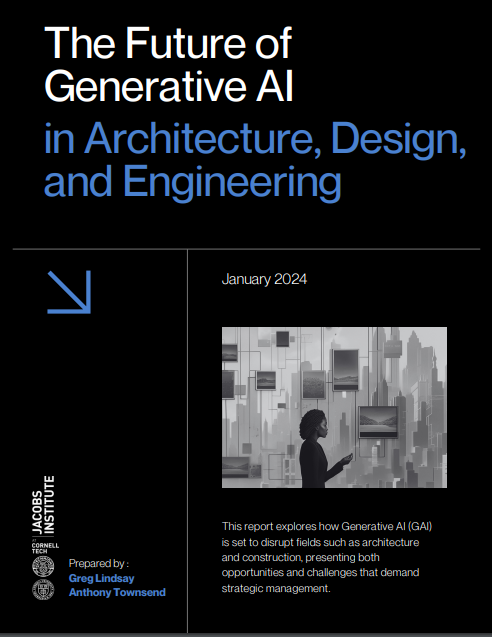The key findings of the report “The Future of Generative AI in Architecture, Design, and Engineering” include:
- Generative AI (GAI) has the potential to disrupt fields such as architecture, design, and engineering by enabling users to quickly generate digital content in response to prompts.
- GAI, represented by large language models like GPT-4, has shown remarkable capabilities in natural language processing, machine translation, and content generation.
- GAI’s ability to produce thoughtful content and analysis at almost zero marginal cost is causing significant impact in global politics, industry, and culture.
- The architecture, engineering, and construction (AEC) industry is already experiencing the effects of GAI, with concerns about job displacement and the use of AI-generated avatars.
- GAI is compute-bound, leading to a high demand for computing power, particularly GPUs. However, emerging trends suggest that future developments will establish a baseline for computing capacity, driving down prices and encouraging new applications.
- The development of GAI represents a step-change disruption rather than an exponential breakthrough toward artificial general intelligence. Bigger-is-always-better approaches may be reaching their limits.
- Adoption and adaptation of GAI will happen more slowly in large, existing organizations compared to smaller, newer ones. AEC firms may lag behind in adopting GAI due to structural constraints and limited resources for investing in new tools and workflows.
- The pressure to adopt and adapt to GAI will come from outside AEC companies (clients, contractors) rather than within, and from the bottom-up (teams and individuals) rather than top-down.
- Strategic dilemmas arise in the development and delivery of generative AI use cases, including tradeoffs between human experience and machine learning in workflows, and decisions about which end of the workflow (front or back) GAI should be integrated into first.
- It is important for organizations to approach the development of GAI with ambition, pragmatism, and flexibility, understanding that GAI is not a solution to all creative tasks and that careful assessment of tasks and processes is necessary for successful integration.
